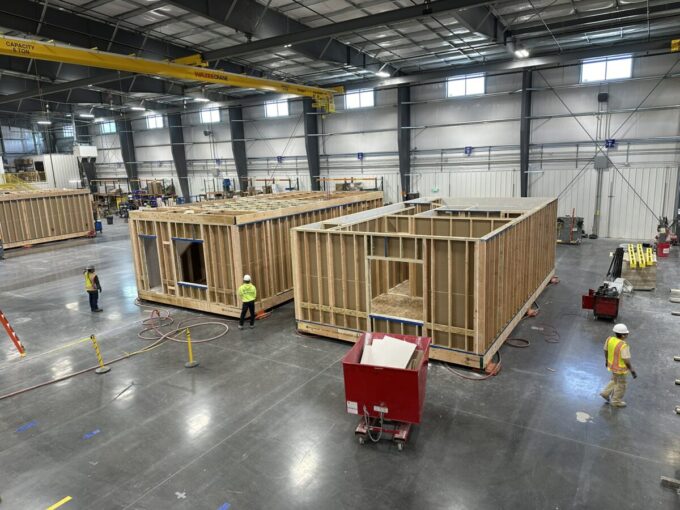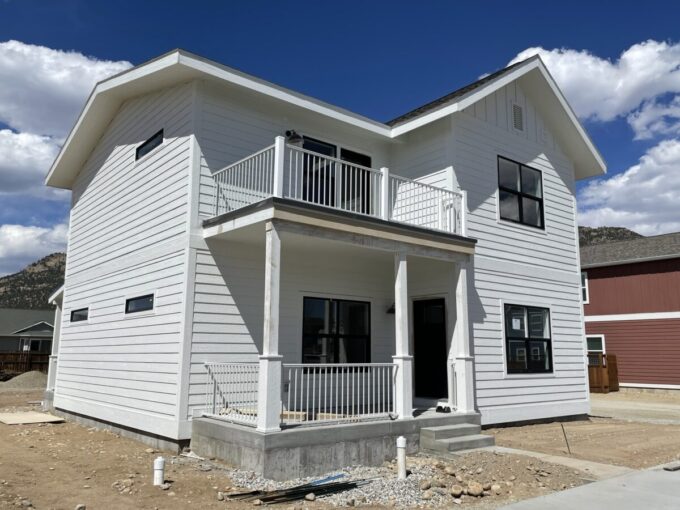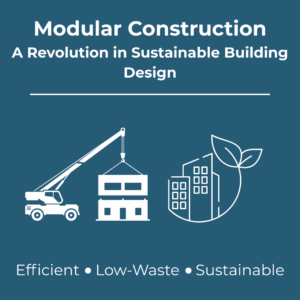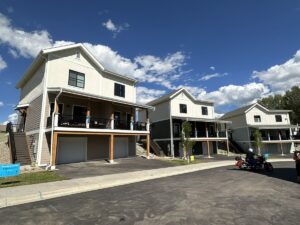Financing modular construction differs significantly from traditional construction. Modular construction offers unique benefits but also presents distinct challenges in securing loans. This article explores those differences and provides actual examples to clarify loan terms for both construction types.
What is Modular Construction?
Modular construction involves building sections of a structure off-site, then assembling them on-site. This method can reduce construction time and costs. According to the Modular Building Institute, modular construction can reduce building time by up to 50% . However, financing modular homes requires understanding how lenders view this construction type.

Financing Options for Modular Construction
Traditional home loans might not apply directly to modular construction. Lenders view modular homes differently due to the off-site building process. Here are some common financing options:
- Construction-to-Permanent Loans: These loans cover both construction and mortgage. The loan converts to a mortgage once construction finishes. For modular homes, lenders may release funds at different stages of completion .
- Personal Loans: These can be used for smaller modular projects. However, interest rates are typically higher than other loan types .
- Manufacturer Financing: Some modular home manufacturers offer financing. These loans can be convenient but may have higher interest rates or less favorable terms .
Comparing Loan Terms: Modular vs. Traditional Construction
Understanding the differences in loan terms between modular and traditional construction is crucial. Here are key factors to consider:
- Loan Approval Process: For traditional construction, lenders typically require detailed blueprints and cost estimates before approval. Modular construction loans might need additional documentation due to the off-site nature of the building process .
- Interest Rates: Modular construction loans can have similar interest rates compared to traditional construction loans. However, the faster completion time can lead to savings in interest payments over the loan term .
- Disbursement of Funds: Traditional construction loans usually release funds based on specific project milestones. Modular construction loans may release funds differently, aligning with factory production stages .
Case Studies
Case Study 1: Modular Home Financing
John and Lisa chose modular construction for their new home. They secured a construction-to-permanent loan from a local bank. The bank released funds at three stages: after the foundation was completed, once the modules were delivered, and after final assembly. This structure creates some challenges because the factory required payments prior to module delivery. John and Lisa had to find bridge financing to cover the time gap between manufacturing and delivery.

Case Study 2: Traditional Home Financing
Mike and Sarah opted for traditional construction. They also used a construction-to-permanent loan. The bank released funds in five stages: foundation, framing, exterior work, interior work, and final inspection. This phased approach ensured funds were available as needed. No bridging was required.
Benefits of Modular Construction Financing
Modular construction can offer cost savings and faster completion. These benefits can offset potential challenges in securing financing. Additionally, some lenders now specialize in modular home loans, offering more competitive rates and terms.
Challenges in Modular Construction Financing
Lenders unfamiliar with modular construction might be hesitant. Providing detailed information and working with experienced lenders, contractors, and architects can mitigate this issue. Additionally, understanding the unique aspects of modular construction financing can help borrowers navigate the process smoothly.
Conclusion
Financing modular construction requires understanding the differences from traditional construction loans. While both offer viable paths to homeownership, modular construction presents unique benefits and challenges. By exploring various financing options and working with experienced lenders, borrowers can successfully finance their modular homes.
For more detailed guidance, consider consulting with financial advisors and lenders who specialize in modular construction loans. They can provide tailored advice and ensure you secure the best terms for your project. The modular experts at EVstudio have a deep network in the industry and can help you make those connections.
Sources:
- Modular Building Institute. “Advantages of Modular Construction.” modular.org.
- Bankrate. “Construction-to-Permanent Loans: How They Work.” bankrate.com.
- Investopedia. “Personal Loans: Definition and How They Work.” investopedia.com.
- Modular Homeowners. “Financing a Modular Home: What You Need to Know.” modularhomeowners.com.
- The Mortgage Reports. “Construction Loans: What You Need to Know.” themortgagereports.com.
- Forbes. “Modular vs. Traditional Construction: A Cost Comparison.” forbes.com.
- LendingTree. “Understanding Construction Loans.” lendingtree.com.
- Example provided by Modular Homeowners.
- Example provided by The Mortgage Reports.









